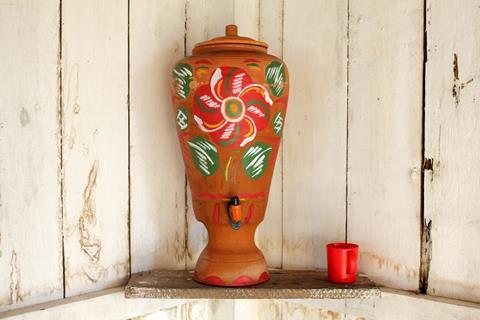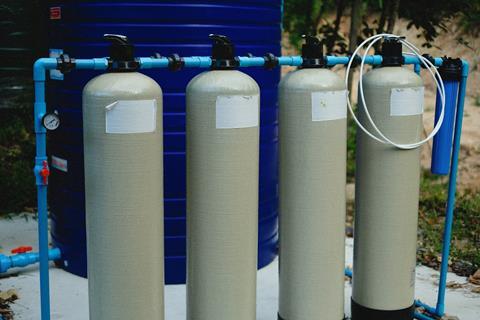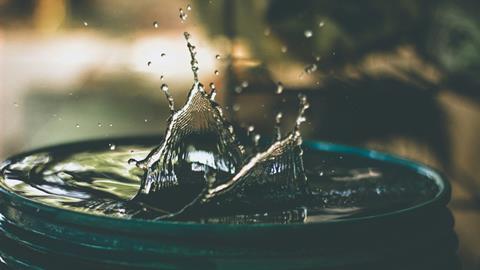The world needs clean water, and a growing population both raises that demand and constrains the supply. Thankfully, many sanitation technologies have emerged over the past few years, offering new ways to get safe sources of drinking or pharmaceutical-grade water. However, high-tech solutions are not always ideal.
Some of the most impactful water sanitation technologies may not fall into what most think of as “technology.” Simpler, low-tech alternatives may be the best way forward as the urgency to produce clean water keeps rising.
The need for low-tech water sanitation
A worrying 25 countries face extreme water stress each year. As much as 50% of the global population deals with high water stress for at least one month annually. At the same time, agricultural and pharmaceutical manufacturing use cases also require clean liquid resources and are likewise growing.
While reducing consumption in industrial and agricultural workflows is important, the world must also tackle the supply issue. The only way to reliably provide enough water for people to drink and use is to expand how they can obtain it. These solutions must be both effective and practical, which is more challenging than it may seem initially.
High-tech water purification methods may achieve great results and boost efficiency, but they’re not applicable in every situation. Some advanced biologics require storage below -10 degrees Celsius, making chemical additives better for pharmaceutical use than drinking water in remote areas. Many water-stressed regions also lack the funds or infrastructure necessary for high-tech solutions.
The areas that need water purification the most also need their sanitation methods to be affordable. Similarly, ideal systems are easy to install, maintain, and use to promote adoption in households without many external resources. Given these demands, low-tech approaches to water purification are the best way forward.
Promising low-tech water sanitation solutions
While no single low-tech water sanitation method has stood out as an industry leader, several promising options have emerged over the years. Here are a few of the most significant.
“Black gold” biochar
One of the most-studied low-tech water purification solutions is biochar, sometimes referred to as “black gold.” Biochar is a form of charcoal, but is lighter and easier to produce sustainably than the conventional material. It also has a larger surface area, at times exceeding 400 square meters per gram.

Such an extensive surface area in a small package gives black gold remarkable adsorption properties. As a result, activated biochar attracts and retains many pollutants from water that passes through it. Biochar-based sanitation systems often consist of little more than a filter for water to flow through, but remove a substantial amount of impurities.
It’s also possible to produce biochar from numerous processes and materials, most of which reduce waste and pollution from normal industrial or agricultural workflows. However, this variety also means black gold filters vary in their efficacy. There are also some lingering questions about secondary pollutants from the free radicals they contain.
Blue coke
Blue coke is a similar solution. It’s a coal-derived material, but unlike other forms of coke, it produces a low amount of ash and has minimal sulfur and phosphorus content. The process of making it is also cost-effective, thanks to its raw material abundance and the relatively low temperatures needed.
As with other activated carbon applications, blue coke-based filters remove contaminants through adsorption. One unique advantage blue coke has over similar methods is its regenerative abilities. It can maintain removal efficiencies of more than 90% over five full cycles, showcasing its utility as a minimal-maintenance purification solution.
One downside to blue coke is that it’s less effective against microorganisms than it is against heavy metals and chemical pollutants. Consequently, it may need to accompany other filtration methods for use in homes.
Solar stills
Adsorption is not the only natural process that can drive effective water purification. Evaporation is also a promising solution, and solar stills aim to capitalize on it to remove contaminants like salt and metals from drinking water.
Solar stills, as their name implies, concentrate the sun’s rays to heat water to the point of evaporation and collect the same water as it condenses. Solid contaminants remain behind as the water changes phases, making this equipment particularly valuable as a desalination tool. While the process does not address microbial contamination, its ability to make brackish or ocean water available to drink demands attention.
Conventional still designs can be expensive, thanks to their reliance on precious metals. However, newer ones have used recycled materials to reduce costs and amplify sustainability. Some can achieve conversion efficiencies of 95% while using resources like recycled tires, which have the added benefit of keeping such waste out of landfills.
Atmospheric water harvesting
A similar approach is to draw water vapor out of the air. The atmosphere holds six times as much freshwater as all of Earth’s rivers combined, making it a tempting source of contaminant-free drinking water. Many atmospheric water harvesting systems are also passive, making them cheap and easy to implement and maintain.
Different atmospheric harvesting methods have varying ideal use cases. Fog nets, which trap airborne water on a mesh surface, are best in high-humidity areas, whereas membranes, which extract water as the wind passes through, are better in lower-humidity but high-heat regions.
This variety also showcases atmospheric harvesting’s main downside — it’s not applicable in every area. However, machine learning models can determine which applications hold the most promise in which regions, making it easier to implement them effectively. Remote communities in hot environments may benefit most from this method.

Ceramic filtration
One of the simplest low-tech water purification options is to use a ceramic filter. These structures have been in use for years in some parts of the world and, despite their simplicity, can reduce the likelihood of diarrheal disease by as much as 70% by removing bacteria.
Ceramic filters use a series of pores to trap contaminants as water flows through layers of clay. Because these pores are typically just a few microns in size, they can remove a wide range of pathogens, from bacteria to heavy metals. Their affordability and ease of use also make them applicable in virtually any area.
Unfortunately, ceramic filtration is less effective against viruses. Filters are also prone to breakage and may need relatively frequent replacement, but their low initial cost may counteract that downside.

Biosand filtration
Biosand filters are similar, but instead of passing water through ceramic plates, the water flows through layers of sand and gravel. The effect is largely the same — pathogens and other contaminants get trapped in the solids while clean water comes out the other end.
These filtration methods can remove 98% of contaminants from water and last for 20 years with proper care. They are inexpensive to replace, making them ideal for use in developing countries and remote rural areas. Their simplicity also means there are fewer ways in which they can degrade.
At the same time, regular use leads to replacement needs. Users will have to clean or replace the sand in the filter over time, and failing to do so can limit the system’s efficacy. Like ceramic filters, biosand is also ineffective against viruses.

Multistep filter systems
Combining multiple filtration and purification steps often yields more effective results. Many high-tech options employ such a strategy, but recent research has shown that multistep filtration systems can be simple and low-tech, too.
In one study, a system of gravity-fed filters and chemical treatments reduced total dissolved solids by 90% while eliminating all microbial contamination. It also reduced water hardness by up to 92% and salinity by 99%. Using the solution would cost just $55.92 annually for a family of six, making it accessible for low-income households.
The key to such solutions is to capitalize on the existing benefits of smaller methods like biochar filtration and reverse osmosis. Because each of these steps is relatively low-cost on its own, the combination remains similarly affordable while accounting for the shortcomings of its individual parts.

The future of green water filtration
Any one of these sustainable and simple water filtration technologies can prove useful in real-world environments. However, it’s unlikely that one will emerge as particularly dominant over the others.
Every method has unique advantages and disadvantages, making it more or less optimal for different use cases. As a result, the best way forward may be to develop all solutions for use in their own ideal applications instead of focusing investment on a single approach.
Hybrid methods typically produce the cleanest water, but their efficacy depends on that of their components. Consequently, the answer still lies in individual advancements in a larger variety of green water filtration systems. As each single approach becomes more reliable, low-cost, low-complexity solutions as a whole will improve.
Low-tech solutions hold promise in a high-tech world
In today’s tech-driven world, complex solutions from advanced technologies often take the spotlight. However, some applications benefit the most from low-tech alternatives. Drinking water is one such area.
Low-tech water filtration ensures clean water is accessible to the populations that need it most. It also enables greater scalability and frees resources to invest in other aspects of sustainability or public health. Pursuing these opportunities may prove key in ensuring a cleaner, safer tomorrow.


No comments yet